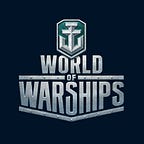IJN Yūdachi — All Aboard The Tokyo Express
Read all about destroyer Yūdachi, one of ten Shiratsuyu-class ships built for the Imperial Japanese Navy in the 1930s.
As with the other ships of her class, she took part in some of the most important naval battles of the Pacific Theater. Yūdachi was eventually destroyed in the Battle of Guadalcanal, but now you can take command of this famous destroyer in World of Warships!
History
The Shiratsuyu-class destroyers were built between 1933–1937. Their project was a modified version of the Hatsuharu-class ships — with these original ships having a number of drawbacks that the Shiratsuyu class improved upon. The new ships had better stability and quadruple-tube torpedo mounts which enhanced torpedo armament.
Yūdachi was the fourth ship in the series. Her hull was laid down on October 16, 1934, at the shipyard of the Sasebo Naval Arsenal. Following Japanese tradition, the ship received a poetic name after a weather phenomenon — Evening Squall. Yūdachi was commissioned on January 7, 1937.
Yūdachi never participated in the historically significant attack on Pearl Harbor. As the war broke out, she was situated at the Mako navy base on the Pescadores Islands to the west of Taiwan, together with her three sister ships Murasame, Harusame, and Samidare. However, the ships of Destroyer Squadron 2 weren’t destined to be out of action: they were engaged in the Japanese invasion of the Philippines, and after January 1942 — in battles for the Dutch East Indies.
The first significant battle in which Yūdachi took part was the Battle of the Java Sea on February 27, 1942. The Japanese formation, under the command of Admiral Takeo Takagi, crushed the Allied squadron without suffering any significant losses.
Yūdachi spent the spring of 1942 in battles for the Philippine Islands, and in June she took a small part in the Battle of Midway. After that, she was planned to be used for raider operations in the Indian Ocean, but the course of the war made the ship return to the Pacific.
On August 30, Yūdachi joined the Tokyo Express, a group of ships delivering reinforcements to the Japanese troops on Guadalcanal during night-time hours. Under the cover of darkness, the fast cruisers and destroyers were safe from the U.S. aviation attacks. In one such operation, Yūdachi scored her first victories: she contributed to the destruction of the old U.S. destroyers — Gregory and Little — that had tried to prevent the Japanese forces from bombing the Henderson Field airfield.
In October 1942, Yūdachi took part in the Battle of the Santa Cruz Islands, and during the night of November 12–13 she set sail on her last voyage. In the First Naval Battle of Guadalcanal — which resembled a bar brawl with the lights turned off, according to the participants of the U.S. side — Yūdachi and another Japanese destroyer, Amatsukaze, separated from the main Japanese forces and stole up to the U.S. convoy from the rear. Amatsukaze successfully torpedoed and sunk destroyer Barton and attacked light cruiser Juneau. Yūdachi wasn’t so lucky: amidst the chaos of the night battle, she mistook U.S. destroyer Sterett for a friendly ship. As a result, the U.S. ship managed to make several accurate hits, leaving Yūdachi dead in the water. Most of the heavily damaged ship’s crew was evacuated by Samidare. The destroyer tried to give her old ally a coup de grace with torpedoes, but missed. Yūdachi was eventually sunk by U.S. heavy cruiser Portland.
Modeling the Ship
Main Battery
Five 127 mm/50 Type 3 guns in two twin and one single turrets. Similar guns were mounted on the majority of Japanese destroyers, from Fubuki to Shimakaze.
Torpedo Armament
Two quadruple-tube 610 mm torpedo launchers. Type 93 Japanese oxygen torpedoes enabled the Imperial Japanese Navy to attack Allied ships out of the blue from distances that had been deemed unreachable for torpedo armament up until then.
Anti-Aircraft Armament
Two single-barrel 40 mm HI Type 91 AA guns. This is how the British QF 2-pounder guns, widely known as “pom-poms”, were designated in the Imperial Japanese Navy. About half a thousand of these guns were purchased in the late 1920s–early 1930s.
Originally published on the official World of Warships site.
